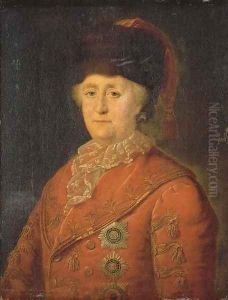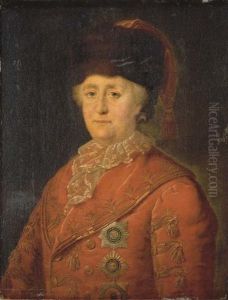Petr Semenovich Drozhdin Paintings
Petr Semenovich Drozhdin was a Soviet painter known for his contributions to socialist realism, the official art form of the Soviet Union from the 1930s until the late 20th century. Born in the village of Chashnikovo, near Moscow, in 1928, Drozhdin grew up during a tumultuous period of Soviet history, characterized by the policies of Joseph Stalin, including forced collectivization and political purges.
Drozhdin began his artistic education at a young age and later attended the prestigious Surikov Moscow State Art Institute, where he was trained in the principles of socialist realism. This art movement focused on the glorification of communist values, such as the dignity of labor, the heroism of Soviet people, and the bright future promised by the socialist system.
During his career, Drozhdin focused on themes that resonated with the Soviet ideology, often depicting workers, soldiers, and peasants. His works were characterized by their idealized portrayal of Soviet life, and he was adept at using art as a means of propaganda, a common practice among artists of his time.
Despite the restrictions on artistic expression during his lifetime, Drozhdin managed to develop a distinct style within the bounds of the socialist realist framework. His paintings were known for their vivid colors, dynamic compositions, and ability to convey the sense of optimism and progress that the Soviet state endeavored to project.
Petr Semenovich Drozhdin's contributions to Soviet art were recognized by the state, and he was awarded various honors throughout his career. He remained active in the Soviet art scene until his death in 1975. His works continue to be studied and displayed as examples of socialist realism, offering insight into the culture and politics of the Soviet Union during his lifetime.

